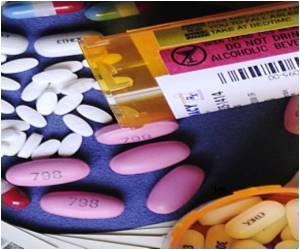Study shows universal access to lifesaving AIDS drugs would require a staggering $15 billion annual investment from the international community

Since 2003, more than 4 million people in Africa have gained access to precious antiretroviral medications, partly as a result of two factors — significant declines in drug prices and a massive influx of foreign aid. But drug prices have reached a plateau in the last few years, while foreign assistance for HIV appears to be stalled amid the global economic downturn and changing global-health investment priorities.
"The things we have been doing are extraordinary in terms of reducing antiretroviral prices and mobilizing resources from the wealthy countries. Those investments have worked," said Eran Bendavid, MD, MS, an instructor in medicine and first author of the study. "But we’re reaching the point where we can’t further reduce drug costs. So it’s up to the people with the purse strings to decide how close we’ll get to universal access."
Universal access — the widely heralded goal of extending antiretroviral treatment to all those who need it — seems a distant possibility in today’s economic climate. The researchers calculate that to reach universal coverage for an additional 4.8 million patients in 13 African countries, based on today’s conservative pricing of $100 a year per patient, would cost $14.8 billion a year.
"We’re not close to having enough resources out there for universal coverage, as the resources needed are staggering," Bendavid said.
The study will be published online Nov. 19 in the British Medical Journal.
Advertisement
Prices, however, are unlikely to drop any further and, in fact, could increase, Bendavid noted. New guidelines from the World Health Organization recommend that patients in the developing world be put on first-line drugs that are more effective and less toxic, but that are also two to three times more expensive than existing medications, costing about $200 to $300 a year per patient, he said.
Advertisement
The United States has provided the largest share of AIDS funding through the President’s Emergency Plan for AIDS Relief, initiated in 2003 under the Bush administration. PEPFAR funding, however, has leveled off in recent years; its annual budget for 2009 and 2010 remained the same at a little over $6 billion, while its 2011 budget reflects only a small increase, Bendavid said.
The other major supporter of AIDS programs has been the Global Fund to Fight AIDS, Tuberculosis and Malaria, a public/private partnership that recently came up short in its appeal to rich nations. The nonprofit agency had sought $20 billion in three-year pledges to expand treatment, but only received $11.7 billion in pledges, even less than what it termed its "austerity budget."
Currently, the Global Fund does not have enough to sustain its existing programs at a cost of $17 billion over the next three years, much less to achieve the goal of universal access by 2010 — one of the U.N. Millennium Development Goals established in 2000.
"Finding ways to make those resources available is going to be a challenge for the wealthy countries unless we can reduce the prevalence of HIV substantially," Bendavid said. "It’s becoming clear that providing treatment for everybody is just not sustainable."
He said the programs will have to work more efficiently in how they manage resources.
"It is somewhat sobering, but the flip side is making sure we can take the best possible care of people on treatment and make the best use of resources we have," he said.
Source-Eurekalert














